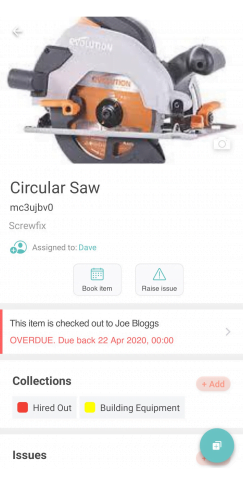If you’re wondering how to use an asset management system, you’ve come to the right place. We’ll walk you through the best uses of your asset management system to save you the most time and money possible.
It’s quite simple to set up, from tagging your assets to tracking everything you need to know about them.
Choosing Your Asset management software
First of all, you’ll want to choose the right asset management software for your business. Multiple departments or areas of the company will likely have an interest in asset tagging and management. Therefore, it’s worth gathering a complete list of everything that’s needed so you’re sure you’ve chosen the right asset tracking software.
For example, if you’re tracking restoration and remediation equipment, you’ll want to know how long assets have been left on-site, where they are for asset retrieval, and who has been using them.
If you’re in the healthcare industry, you’ll want a system that works well with your medical and hospital equipment, as assets will move around a lot more and require pre-emptive maintenance.
Finding an incredibly streamlined asset management system, such as itemit should help you with any of your asset tracking needs. We have many clients in many different industries and have built a wide range of helpful features which you can benefit from.
We offer a free trial so that you can test out these features for yourself. Start your free trial now by clicking the button below.
QR Code Asset Management
The best way you can save time and track the location of your assets is to use asset tags. When you tag your assets with your QR code tags, you can quickly link up a physical asset to its digital profile in your asset management system.
What this means is that every time you scan a piece of equipment’s QR code with your phone in your asset management app, the profile of the asset will appear. You can then view or add crucial information, such as maintenance history, warranties, or manuals.
Take a look at the asset profile below to show you what we mean.

Not only this, but each scan also updates the asset’s geolocation. Therefore, everyone sees where your asset was last seen in real-time, which is excellent for auditing, inventory, and retrieval purposes.
The great thing about tagging your assets is that you can also log them into your asset management system at the same time, with a picture, creating a full, transparent fixed asset register.
Asset Management and Tracking Tools
When you’ve logged and tagged all of your assets, the only thing you need to do next is start tracking! With a system like itemit, much of the tracking is automated. For example, every asset movement is logged by scanning.
However, with the ease of opening an asset profile in your asset management system, you’ll also be able to take advantage of many additional features. Here are just some of the features you can benefit from:
Issues Management
Track and manage asset issues for reactive and routine maintenance. Report issues without the need to open the app.
Asset Booking System
Check assets in and out and book them in advance. Know which assets are undergoing downtime for maintenance, and which are rented out.
QR, RFID and Barcode Tagging Options
Tag and track asset location and usage using a wide range of our asset tags. Get started now!
To find out more about the many ways itemit’s asset management system can help you, speak to the friendly team by emailing team@itemit.com or fill in the form below.
Find Out More About Our Asset Management System
Start your free 14-day trial now
Instant access. No credit card details required.


